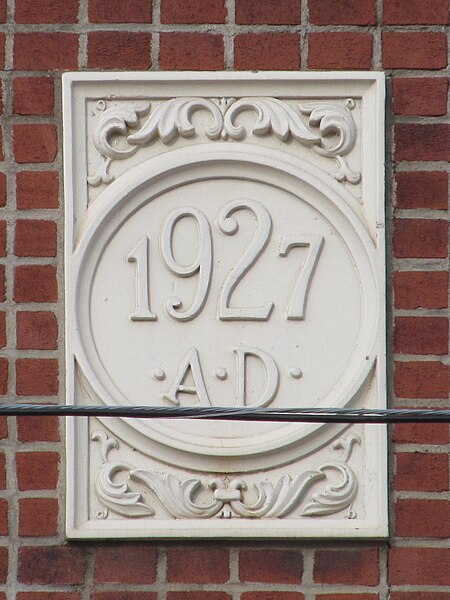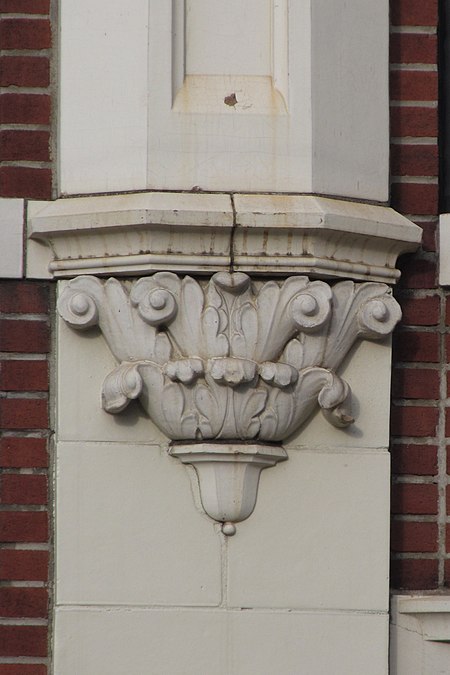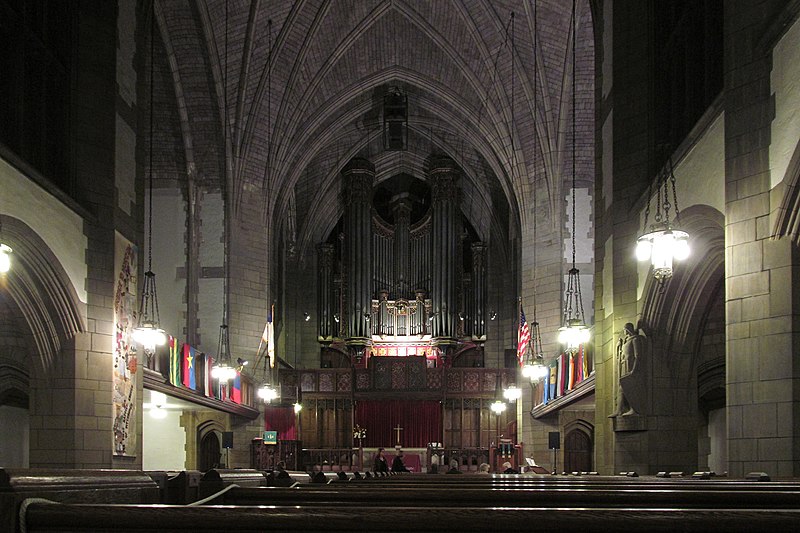
Jacobean Gothic is filtered through an Art Deco lens in this building from 1927, which has been sympathetically modernized with current materials that fit with and emphasize its distinctive character. The original terra-cotta ornaments have been lovingly preserved. This is a good example of how a commercial building can be brought up to date with good taste on a limited budget. Old Pa Pitt has not been able to determine what the building’s original name was; it now belongs to an organization for senior citizens.

Father Pitt knows how his readers appreciate a good utility cable, so here is a fine closeup of one, unfortunately marred by a date stone in the background.



































